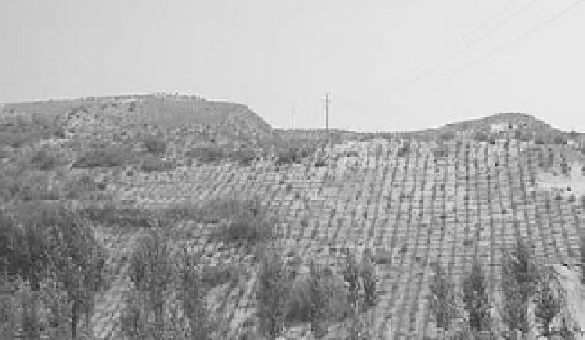Environmental Engineering Reference
In-Depth Information
source/sink functions are all critically tied to the vegetative biomass amount, quality, and condition.
Restoration designs should protect existing native vegetation and restore vegetative structure to result
in a contiguous and connected stream corridor. Numerous shrubs and trees have been evaluated as
restoration candidates, including willows (Svejcar et al., 1992; Anderson et al., 1978); alder, serviceberry,
oceanspray, and vine maple (Flessner et al., 1992); Sitka and thin leaf alder (Java and Everett, 1992);
paloverde and honey mesquite (Anderson et al., 1978); and many others. Selection of vegetative species
may be based on the desire to provide habitat for a particular species of interest. The current trend in
restoration, however, is to apply a multi-species or ecosystem approach.
The large-scale restoration of forest in the U.S. was undertaken by the Tennessee Valley Authority in
conjunction with reservoir construction projects in the southern U.S. during the 1940s. Roads and
railways were relocated outside the influence of the maximum pool elevation, but they were placed on
embankments. The Tennessee Valley Authority was concerned that the roads and railways would be
subject to wave erosion during periods of extreme high water. To reduce that possibility, agricultural
fields between the reservoir and the embankments were planted with trees. At Kentucky Reservoir,
approximately 4 km
2
of trees were planted, mostly on hydric soils adjacent to tributaries of the Tennessee
River. Because the purpose of the planting was erosion control, little thought was given to recreating
natural patterns of plant community composition and structure. Trees were evenly spaced in rows, and
planted species were apparently chosen for maximum flood tolerance. As a result, the studied stands had
an initial composition dominated by bald cypress, green ash, red maple, and water tolerant species, but
they did not originally contain many of the other common bottomland forest species, such as oaks.
In the middle reaches of the Yellow River to the north part of the Loess Plateau in China, a desert
named the Maousu Desert extends over thousands of square kilometers. Very high rates of erosion
occurred in the area, which impaired the terrestrial vegetation and caused detriment to the river ecology.
Great efforts have been made for erosion control in this area. Figure 10.57 shows the reforestation of the
desert land. As a result of reforestation the sediment yield has greatly reduced, a plant community has
developed, and some animals find their habitats in the area. Finally, the river ecology has improved.
Plant community restoration
—Non-native vegetation can prevent establishment of desirable native
species or become an unwanted permanent component of vegetation. For example, kudzu can kill forest
species planted on out pasture grasses and weeds. Restoration work should restore natural patterns of
plant community distribution by comparing with a reference plant community (Brinson et al., 1981;
Wharton et al., 1982).
Fig. 10.57
Reforestation of the desert in the middle reaches of the Yellow River


Search WWH ::

Custom Search